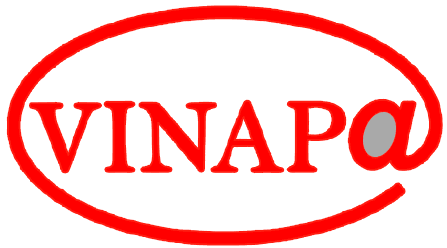News
HOW MANY TYPES OF COMMON PLASTIC ARE THERE?
Plastic is a consequence of strong development around the world. Plastic products have been widely used in the market. So do you know how many types and distinctions there are? This article helps us better understand plastics and their applications.
What is plastic?
Plastics are materials composed of synthetic or semi-synthetic organic compounds that are malleable and therefore used to mold into solid objects.
Because of its low cost, ease of production, flexibility and waterproofness, plastic is used in countless products in different fields: stationery, daily life, electronics, telecommunications,… to the universe. It prevails over traditional materials: wood, stone, leather, metal, glass,…

So how many types of common plastic are there?
There are many ways to classify plastics: based on chemical structure, chemical process, physical properties… And more simply, we can divide them into 2 types: normal plastic and specialized plastic. In this article, we will guide you to distinguish between common types of plastic available on the market and their direct impact on life.
Common plastics have 7 main groups:
No. 1 – PET plastic (PETE): carbonated drink bottles, plastic films and packaging.
No. 2 – HD plastic (HDPE): cleaning chemicals, solutions, packaging,…
No. 3 – PVC plastic: water pipes, insulating materials, floors, doors,…
No. 4 – LDPE plastic: flooring, outdoor decoration materials, packaging,…
No. 5 – PP plastic: food containers, straws, bottle caps, pressure pipes, etc.
No. 6 – PS plastic: food containers, disposable products, compact discs, cutlery,…
Number 7 – PC plastic or no symbol: traffic lights, eyeglasses,…
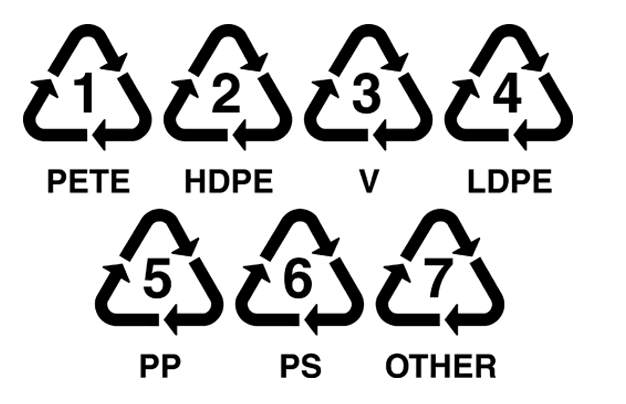
Let’s find out more in detail with Vinh Nam!
No. 1 – PET plastic (PETE)
PET plastic (Polyethylene terephthalate) is one of the most popular plastics.
PET plastic is often used to store liquid foods such as: soft drink bottles, mineral water bottles, soft drinks, beer, sauce bottles, juice bottles…
PET plastic should only be used once, should not be reused many times, you should not reuse it many times because there is a possibility that the plastic will penetrate into your food and drinks, affecting your health.
Characteristics: easily affected by temperature
The heat resistance of PET plastic is very low, easily deformed, warped and absolutely should not be used to hold hot water/food. At that time, the possibility of absorbing toxic compounds in plastic into drinking water is quite high, potentially affecting health.
Bottles of mineral water when left in the car when exposed to hot temperatures also have a high risk of affecting health, even causing cancer.
PET plastic is very difficult to clean, its recyclability is quite low (only about 20%), it is easily deformed, dented… So it is best to throw it away after using it, do not reuse it to store water again. many times.
Safe or not?
Under normal temperature conditions or using plastic water bottles in the refrigerator, PET plastic is considered non-toxic. However, at high temperatures, PET plastic (pete plastic) will not be safe (put in a car, near a gas stove, in the sun…).
Note: should not be used multiple times.
No. 2 – HD Plastic (HDPE)
HDP (High Density Polyethylene) is the best of all plastics. This is the type of plastic that experts often recommend choosing when storing food.
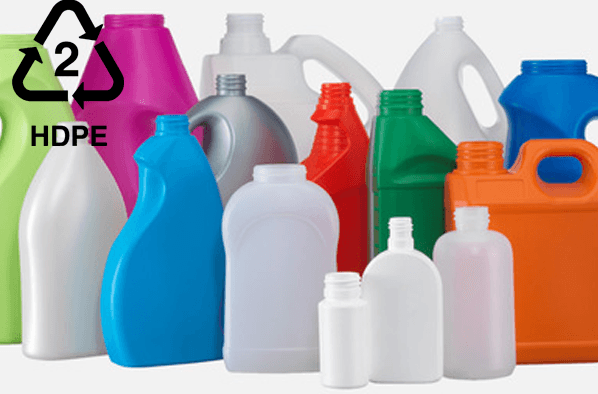
Characteristic:
High durability, good impact resistance, low deformation and scratches.
High heat resistance (withstands temperatures of 120oC for short periods or 110oC for long periods of time
Chemically inert (not affected by environmental effects, does not secrete toxicity)
Safe for health
Therefore, HDPE is used to make items such as: hdpe plastic bottles, milk bottles, hard plastic bottles, detergent bottles (not affected in acidic environments), cooking oil, toys and some plastic bags.
No. 3 – PVC plastic
PVC is a soft and flexible plastic but contains many toxic chemicals.
Properties: Toxic additives such as phthalates and bisphenol A are often used in the production of PVC plastic. The most notable of which is Bisphenol A (BPA), which is a hormone-destroying substance that can lead to cancer and many other dangerous diseases.
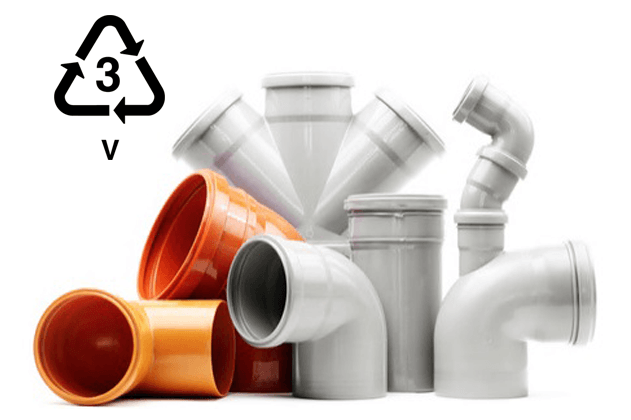
Application:
Types of packaging films, food wraps, transparent plastic films
Bottles such as cooking oil bottles, water bottles, and liquid food solutions
All kinds of toys and many other products.
Attention:
PVC plastic has the ability to penetrate and dissolve into food under the influence of temperature, which is very dangerous. Below I summarize the most important points that you need to keep in mind with PVC plastic:
When buying toys for your baby, absolutely do not buy toys made of PVC, and avoid letting your baby suck on plastic toys.
Limit the use of food wrap, especially never wrap hot food. Absolutely do not use plastic wrap and then put it in the microwave to reheat => a habit that is extremely dangerous to your health.
Do not use PVC plastic to store food, reheat food or store hot foods.
No. 4 – LDPE plastic
Similar to plastic number 2, LDPE – Low Density Polyethylene is a chemically inert plastic, but a little less physically durable than HDPE, can withstand 95oC for a short time.
Due to its chemical inertness, LDPE plastic is often used to make chemical bottles, nylon gloves, nylon bags, shopping bags and cake crusts.
LDPE plastic should not be used in microwave ovens, avoid high temperatures.
In addition, LDPE plastic is easy to break, break, scratch, and is less resistant to physical impact than No. 2 plastic.
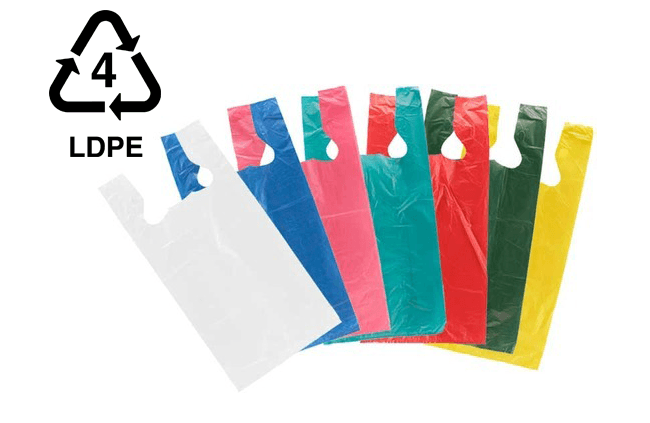
No. 5 – PP plastic
PP plastic (polypropylene) is the type of plastic with the highest heat resistance, resistant to 130oC – 170oC, so it is widely used in making food containers, especially food boxes that can be used in microwaves. . PP plastic is usually slightly transparent
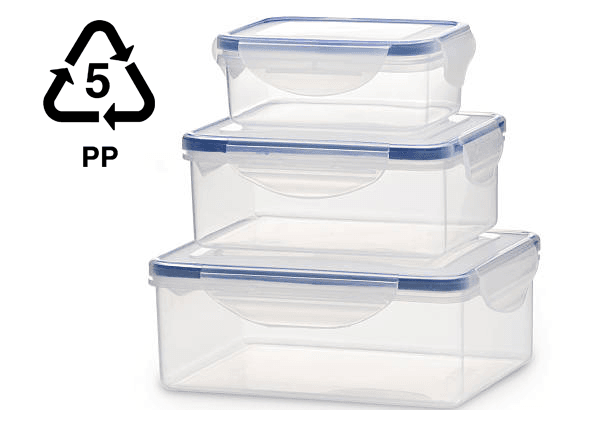
However, according to recommendations, you should only use it in the microwave for 2-3 minutes, do not use it for too long.
PP is the type of plastic recommended by experts because of its chemical inertness, high mechanical strength and thermal resistance, and is very safe for health.
No. 6 – PS plastic
PS plastic (Polystyrene) is a cheap and lightweight plastic. Can be found on the shells of some fast food containers, drinking glasses, egg cartons and picnic spoons, plates and knives.
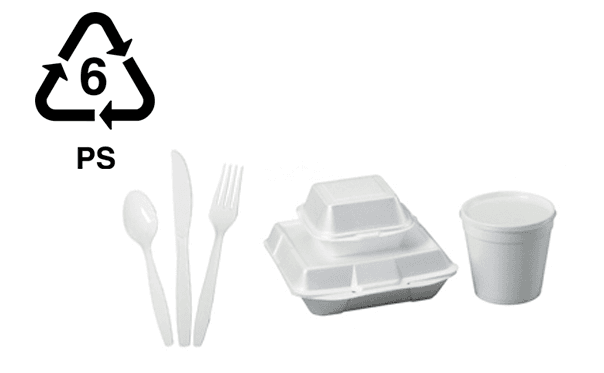
Although they are remarkably resistant to heat and cold, at high temperatures they can release toxic substances. In addition, do not use to store items containing strong acids or strong alkalis. Therefore, this type of plastic is not allowed to be used for long-term storage of food and drinks.
Plastic number 6 is often used for foam plastic boxes or disposable spoons and plates.
Number 7 – PC plastic or no marking
Plastic number 7 includes PC (Polycarbonate) and other plastics. PC plastic is an extremely toxic and cheap plastic.
Plastic number 7 is often used to produce: water bottles, plastic containers for chemicals… Or food containers such as yogurt, noodle boxes, plastic butter boxes…
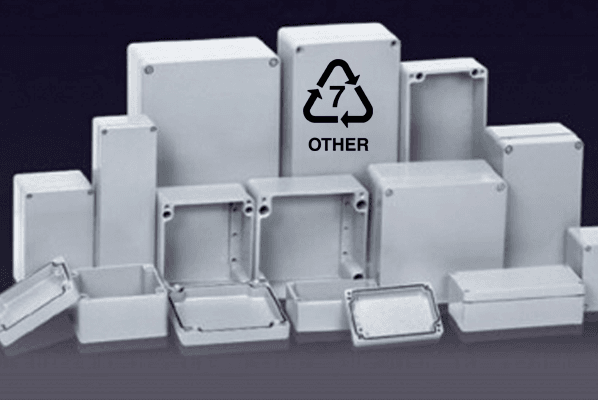
Most notably in this group, some types contain Bisphenol A (BPA), a toxic substance used to produce plastic.
Bisphenol A is an endocrine disruptor in the human body, which can lead to cancer and many other diseases.
=> Plastic number 7 represents the symbol for unsafe and toxic plastics. Especially when storing hot food, it can contaminate food, which is very dangerous.
So which type should I use?
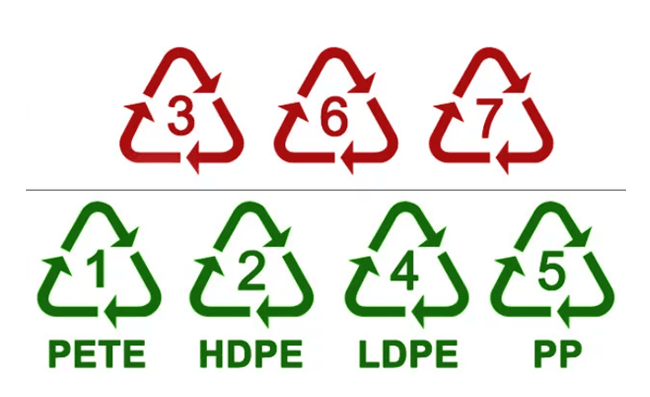
If you buy plastic products, please see what characters are on the bottom!
Products made of plastic in groups 1, 2, 3, 5 should be used and groups 3, 6, 7 should be reviewed.
You should save this information to avoid unfortunate situations from occurring.
Be a smart consumer!
